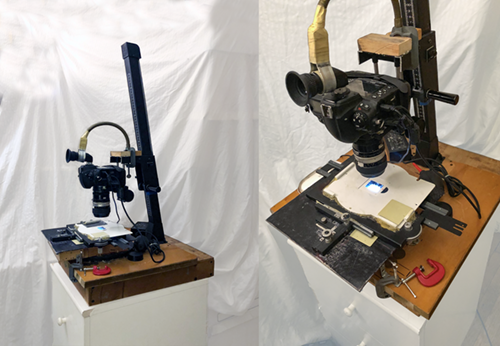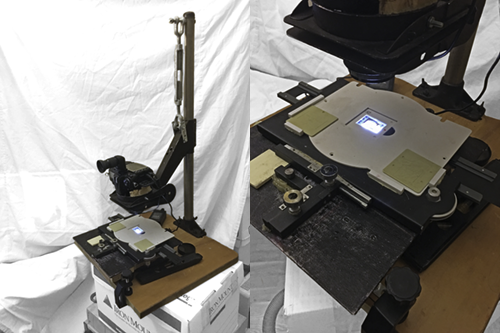|
February 24, 2021 Digitizing Heaven...Almost
One of my main projects, for quite sometime now, is my archive, which is finally looking like one. It still needs a lot of work, but I’m certainly getting somewhere. The archive is inextricably connected with digitizing my negatives and slides. To do this I've tried a number of scanners and technologies, but none really satisfied me. The tonal range was nowhere near the original images nor was the resolution. My frustration led me back to the time when I was living in SoHo, which at the time was up to the rafters with artists. To promote their work artists needed slide duplicates of their work which I saw as an opportunity to produce a much needed income. Using a hand made animation stand I inherited by a real tinkerer I once worked for, I built a duplicating gizmo using a color enlarger head I picked up from the street, my Nikon F with a Nikkor flat field lens and other parts, some bought at Canal Street (a heaven of a flea-market then.) The set-up worked wonderfully well and it was an excellent money-maker.
Coming back to the recent past, my mind went back to those Soho days and I started thinking along the same lines. By this time I had a Nikon D300 and the same 50mm Nikkor lens I used when duplicating slides (nowadays I use a D3, which has better tone range and resolution). On eBay I bought a bunch of stuff, including the main components: a Besseler 35mm negative carrier, which is used for the negative strips; an Omega negative carrier, placed on top of the Besseler, for the slides; a microscope slide carrier for minor adjustments; a lazy Susan turntable and an enlarger column. And used cardboard, wood, plastic, metal, glue, screws and whatever was necessary to finish the gizmo.
After a some tests with the camera and Lightroom (my main archiving program) I saw I was on the right track. Lightroom is fine for this job but not really what I needed. After some research I found Sofortbild and Negative Lab Pro. These programs have resulted in an exponential jump in the quality of the scanned negatives. The resolution was at least as good as the films and the tonal range was far superior than anything I had achieved with the commercial scanners. As a bonus, a real one if you consider the number of negatives and slides I started with (over 100,000,) it is fast, really fast. Commercial scanners can easily take more than ten, twenty or more seconds per frame, the DSLR only a fraction of a second. Also, by adjusting the exposure, something I couldn’t do with my previous scanners, I am able to get the best posible result, even bracketing and using the HDR feature (something I absolutely hate in regular photography) of both Photoshop and Lightroom. This all means that I can do hundreds of scans a day with fantastic quality. And, as another bonus, I’ve been able to save quite a few so overexposed and/or overdeveloped negatives and slides I had never been able to see before with the analog system. It may not be real heaven, but it's tempting to consider it as such, archival and digitizing heaven. And that's it for now.
|
copyright © 2022 MMK-Double M Photos. All rights reserved

